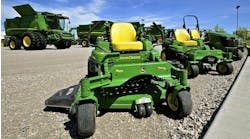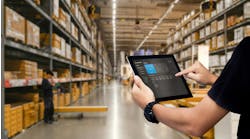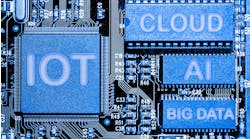By Jim Montague, Control executive editor
Big technological changes like the Industrial IoT, cloud computing and virtualization make a big splash, but they need people to show up and use them consistently to achieve lasting success. If not, they end up in the trash with last year’s fidget spinners.
To examine how increasingly digitalized industries and people are interacting, Irene Petrick, industrial innovation director, and Faith McCreary, principal engineer and user experience researcher, both in the IoT Group at Intel Corp., recently spent six months studying industrial workers from operators to CEOs, and discovered some of the critical success factors for migrating from traditional manufacturing to intelligent, Industry 4.0 factories.
“We need to know where we’re at and where we’re going with IIoT because this transformation isn’t optional—it’s imperative,” said Petrick. “We examined a variety of global trends such as Industry 4.0, China 2020, the gray tsunami of retirements and robots vs. co-bots, and found the biggest and most disruptive was digital architectures and the interoperability demanded by manufacturers, which also introduces vulnerabilities and cybersecurity risks.”
Petrick and McCreary presented “Framing the future: digital intensity and its impact on transformation” at Smart Industry 2018.
Future software focus
Beyond evaluating present manufacturing trends, Petrick and McCreary reported that future industrial systems will likely be characterized by:
• Software-defined equipment and collaborative machines
• Self-aware production systems
• Flexible, self-organizing production flows
• Real-time, reliable computing and connectivity
• Embedded enterprise-to-enterprise connectivity
• Human-in-the-loop, connected and enabled workers
“Self-aware machines will be able operate within tolerances, alert manufacturing execution systems (MES), request maintenance or parts, and introduce themselves back into the overall production system,” explained Petrick. “But, if we can leverage humans, that’s the way this digital transformation gets accelerated. Plus, we need end-to-end cybersecurity that’s built-in, not bolted on.
“However, we’re not there yet because there’s still a lot of unconnected machines and dark data that never gets used. Many pundits think we’re still a decade away from self-aware machines and computers. We think it’s coming a lot sooner.”
Studying the transformation
The six-month study that Petrick and Creary conducted included 145 manufacturing participants from 133 companies, 1,323 data sets and 11 hours of interview with senior leaders. The study began in summer 2017 and concluded in early 2018. The study included a range of industries, a slight majority multinational and two-thirds focused on discrete manufacturing.
An unusual aspect of the study was that respondents weren’t just interviewed once or twice, but instead reported in frequently during the study period, using a variety of formats offered by an app on their mobile devices. The participants answered questions, but they also provided input about victories and frustrations in their jobs, and how they viewed technological shifts in their own jobs and organizations.
The study revealed that, as digitalization increases, work is become more automated, more strategic and more transparent.
One factory operations manager in the study reported, “I do see a lot of digital changes, and changes for the better that are happening, especially in the next three to five years. But, I think a big problem is that once we implement something new, we kind of keep the old stuff around.” Meanwhile, a factory operations technologist in the study added, “An increase in automation makes the job less hands-on, but it still requires the skill and knowledge to properly setup and program a job.”
McCreary explained, “Mobile ethnography let us follow people over weeks, and learn about their pain points and ways they found to improve,” explained McCreary. “Overall, work is going from manual and hands-on to strategizing. So, by the time an organization is ready to make the jump to becoming a digital factory, they may still be talking about productivity and efficiency, but what they’re really thinking about is quality.”
McCreary added that, instead of replacing people, automation is actually enabling many of them to perform augmented tasks, and take on combined or hybrid roles. Some of these new jobs descriptions may include:
• Factory pit boss, who combines formerly separate functions of factory supervisor, hand-on risk spotter and hands-on worker;
• Minimally manual laborer, who still carries out hands-on worker tasks that must be done on the plant floor;
• Factory optimizer, who does work similar to an operations coordinator, but also uses real-time data to proactively solve problems;
• DevOps doer, who combines the tasks presently performed by IT staff on the enterprise side and OT staff on the plant/equipment side;
• Transformation leader, who used to be a manufacturing leader requiring data-driven insights, but uses data at the heart of the organization to empower its employees;
• Next-generation technologist, who uses innovative technologies to solve big business problems; and,
• Risk controller, who used to be a risk engineer, but evolved to gain greater visibility into operations, and proactively assesses and manages risk. “As we look at the move from low to high digital intensity, there’s an evolutionary leap happening among the people in those roles,” explained McCreary. “Today, factories are generally reactive. In the future, digitalization is going to make them much more proactive, and many former roles will merge. The questions are: What are the obstacles to needed change, and how do we make those leaps successfully?”
Leaders can't lag
McCreary reported that digital transformation means that manufacturing leaders must change their roles and behavior, too.
“Leaders also have a mandate to transform, avoid resistance, and make their people part of the change,” she said. “This means closing gaps in skills, understanding and trust, so the overall transformation is easier for everyone to navigate. Some people have very high and unrealistic expectations about what digital technology can do, and leaders need to manage those expectations. Some workers are concerned that smart factories will tattle on them, and those fears need to be addressed.”
McCreary added that leaders and organizations need to “frame the journey” they’re likely to experience because digital transformation is probably closer than they realize. “We’re thinking the intelligent factory is just three to five years out,” she said. “This means leaders and personnel need to develop a vision about what they want their own smart factory to do, and design proof-ofconcepts (POC) with non-numeric benefits, which they can apply to actual business problems in pockets of their facilities. This will let them start small, but think big about what digitalization can do for them.”


